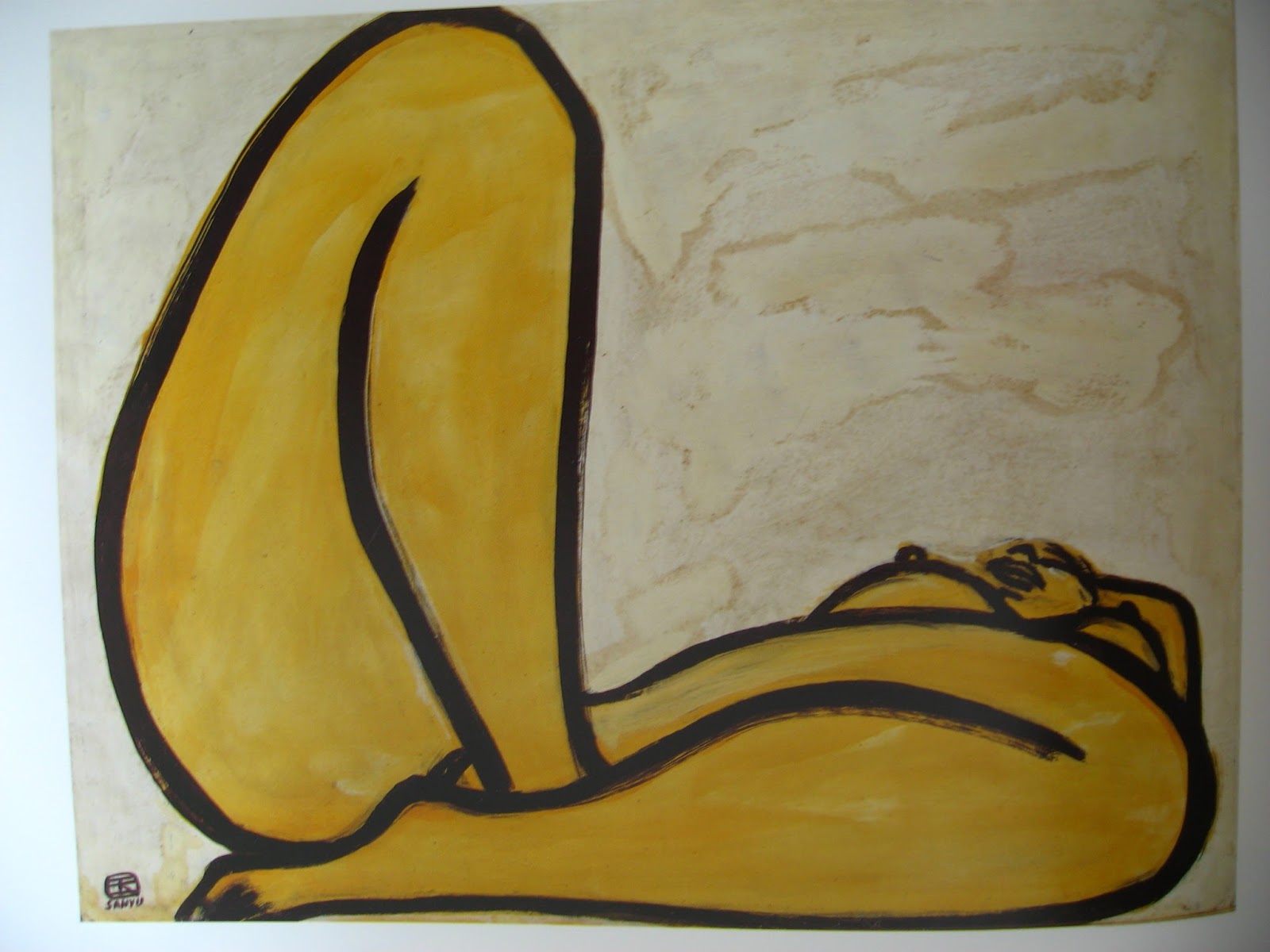==========================================================
Translated by Ann Lee from the Taiwan blog “Elsewhere of Elsewhere”
==========================================================
Once upon in ancient China, it is said that a king was willing
to trade 15 cities of his kingdom for one piece of precious jade, “Jade of Falling Cities (Jade of Clan HE).” If we calculate the value of the jade into today’s
currency, for 15 cities in China, the price must be much more than billion
dollars. The term “Jade of Falling Cities” thus means the artifact is indeed
the most valuable treasure. The Chinese artist, Sanyu (Yu San) (1901-1966), is
definitely the “Jade of Falling Cities” in the world of modern and contemporary
art.
Pink Lotus, Sanyu
The finest aspects of his
aesthetics are almost impossible to put into words, and even if we try, they
are then never the real finest aspects of the artist. The philosophy is very
much like “Zen.” Each of us has to come to realize the beauty of Sanyu by our
own senses. No one else but our own hearts could help us understand the works.
It is said that we can point our fingers to the moon, but the “finger” is not
the moon itself. Even though I try to describe the finest aspects of Sanyu’s
artworks in this article, my words are your “fingers” for references only.
Please do enjoy Sanyu by looking and reading his artworks on your own.
Sanyu is the master of using
western medium (oil painting) to express the taste of a cultural traditional
Chinese literati. His aesthetics have reached the level of divinity by
perfectly uniting medium and expression, as well as his confident and smooth
lines, free and liberal techniques, which bring his works to the level of unique
and effortless beauty. Except the medium (oil painting) which is a western
material, all other aspects in Sanyu’s painting, the techniques, spirit, and
even the subject are absolutely East. His art is full of aesthetics purity
unique to East culture, which resembling the novel, Snow Country, by the
Japanese novelist Yasunari Kawabata, or even to a degree that no words can
express the profound meanings of Sanyu’s artwork. His art embraces the East and
the West, and it is a sole existence in the art history which stands tall in
front of any international masters of art.
Nude, Sanyu
Four Nudes, Sanyu
By repeatedly reducing the
lines to the simplicity, Sanyu’s gave his art a spiritual, natural existence.
These astonishing lines are comprehensive as well as expressive, as if they are
as heavy as a mountain, but also as light as a feather. His art is never
artificial, and is able to directly present to the viewers the fundamental
quality of his theme. The artist possessed a personal, sincere and original
capability of interpretation.By
these reasons they are the common characters of all great artists.
Majority of Sanyu’s theme in
his painting are female nudes, floral still lifes and animal subjects. Often,
some portions of his female nudes and animal subjects are properly deformed for
embodying the beauty of lines and rhythm, for example, Girl in Blue Dress with
White Dots by Sanyu around 1930s as follows:
Girl in Blue Dress with White
Dots, Sanyu
Colors of this painting on a
computer screen are slightly off from the original. It is better we viewers try
to find the original painting or albums with more precise colors in print. (Of
course, it is rather difficult to see the original paintings nowadays. There
are many fake paintings in the market.) Finally, here is the last painting of Sanyu,
Elephant, in 1966, as follows:
Elephant, Sanyu, 1966
In the year 1966, which is the
last year of Sanyu’s life, the artist told his friend that he had started a
painting, “I drew the painting, simplified it, and then simplified if again...”
“That is a tiny elephant, running in the desert with no boundary..., that is
me.” The artist couldn’t find a place to survive in the massive universe, as
though he is this little elephant who ran in isolation. Tears were almost
bursted out at my first time reading these words: “Exactly, the great artist is
indeed this little elephant running in the endless desert. Sorry for such a
hard time...”





沒有留言:
張貼留言